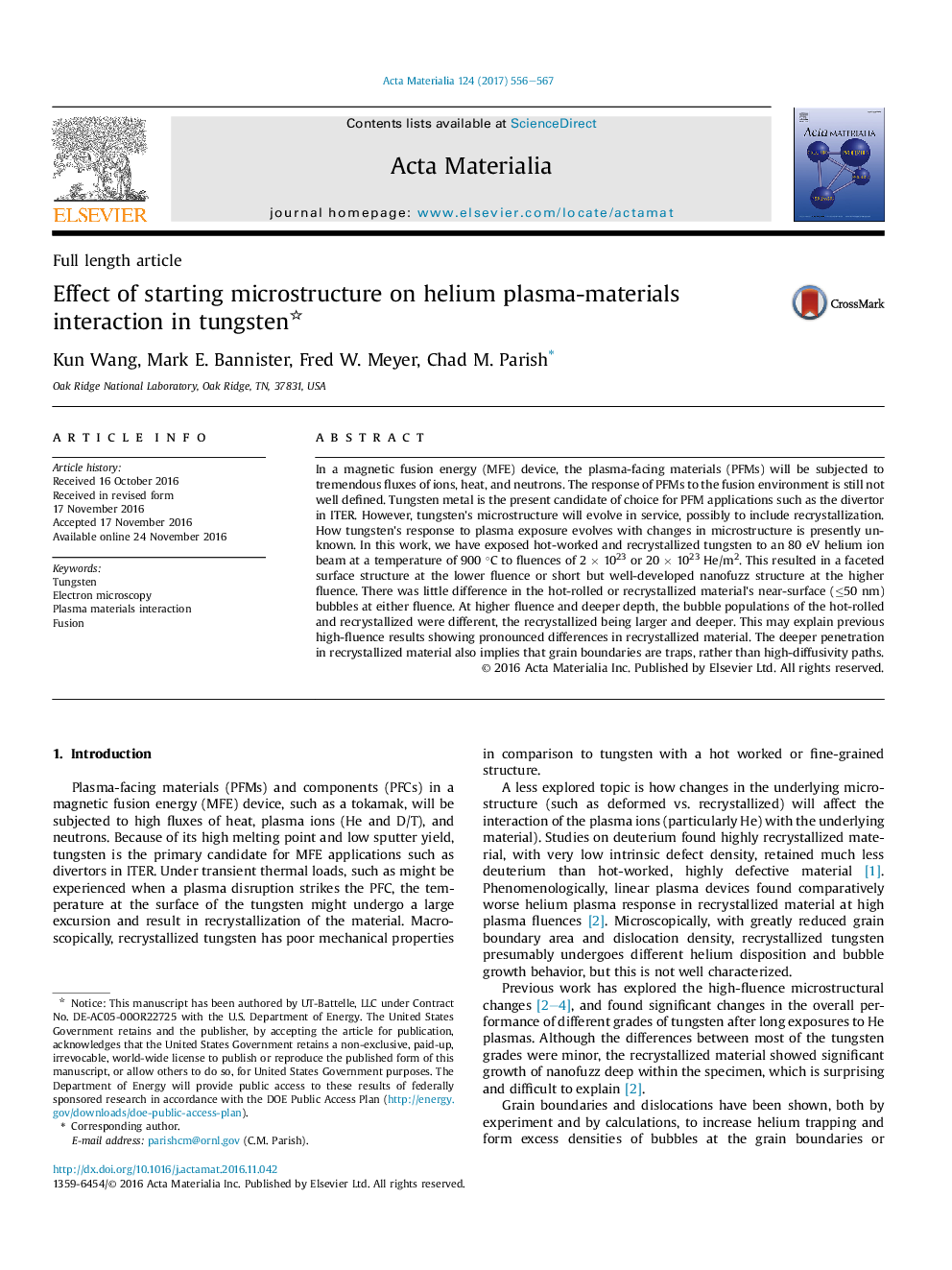| کد مقاله | کد نشریه | سال انتشار | مقاله انگلیسی | نسخه تمام متن |
|---|---|---|---|---|
| 5436474 | 1509552 | 2017 | 12 صفحه PDF | دانلود رایگان |

In a magnetic fusion energy (MFE) device, the plasma-facing materials (PFMs) will be subjected to tremendous fluxes of ions, heat, and neutrons. The response of PFMs to the fusion environment is still not well defined. Tungsten metal is the present candidate of choice for PFM applications such as the divertor in ITER. However, tungsten's microstructure will evolve in service, possibly to include recrystallization. How tungsten's response to plasma exposure evolves with changes in microstructure is presently unknown. In this work, we have exposed hot-worked and recrystallized tungsten to an 80 eV helium ion beam at a temperature of 900 °C to fluences of 2 × 1023 or 20 × 1023 He/m2. This resulted in a faceted surface structure at the lower fluence or short but well-developed nanofuzz structure at the higher fluence. There was little difference in the hot-rolled or recrystallized material's near-surface (≤50 nm) bubbles at either fluence. At higher fluence and deeper depth, the bubble populations of the hot-rolled and recrystallized were different, the recrystallized being larger and deeper. This may explain previous high-fluence results showing pronounced differences in recrystallized material. The deeper penetration in recrystallized material also implies that grain boundaries are traps, rather than high-diffusivity paths.
Figure optionsDownload high-quality image (303 K)Download as PowerPoint slide
Journal: Acta Materialia - Volume 124, 1 February 2017, Pages 556–567